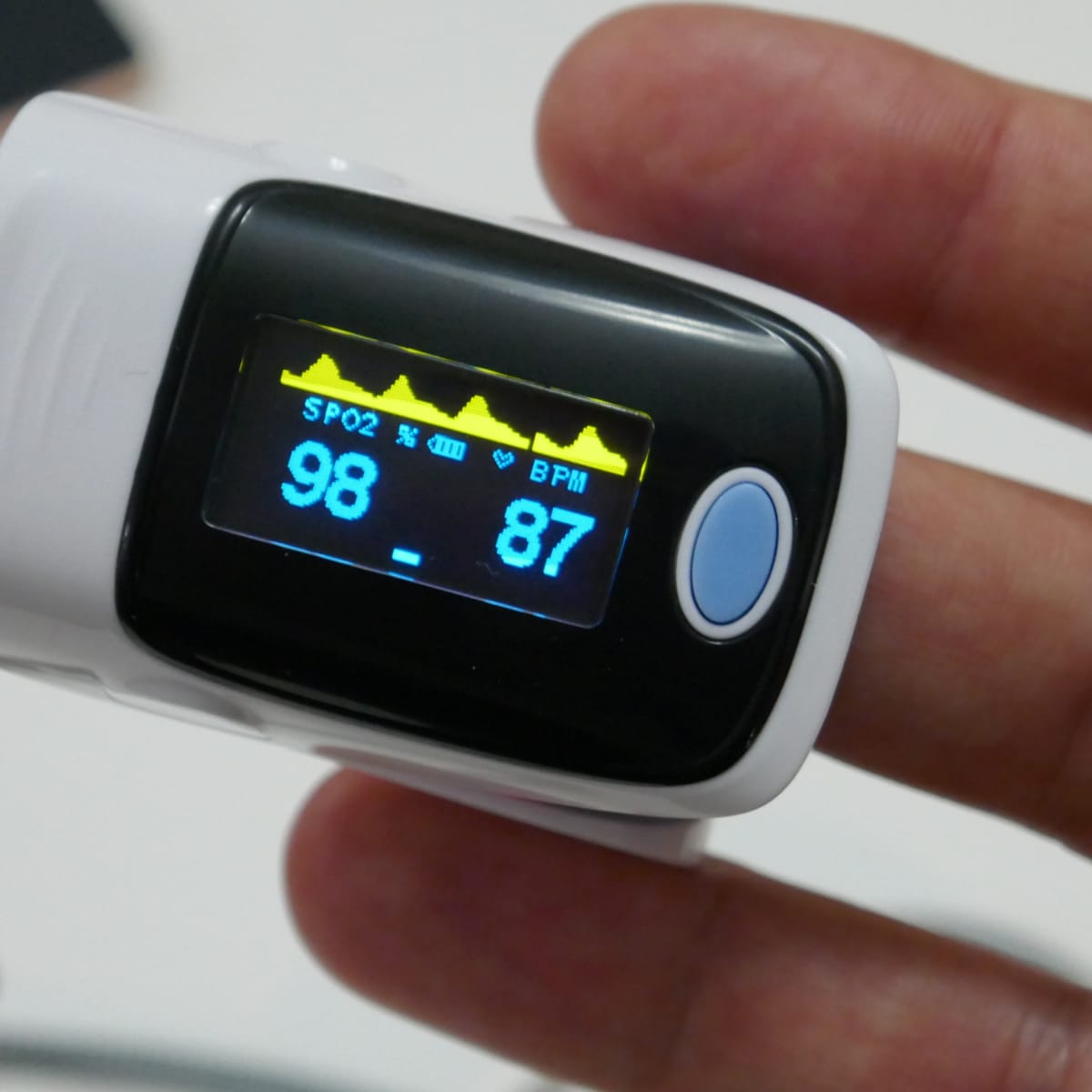We all know that we require oxygen forever. (Several of you might find this area a little as well standard. In that instance, to skip this short section, click this web link to go to following area Physical properties utilized in pulse oximetry) Oxygen gets in the lungs as well as after that is passed on right into blood.
The main way oxygen is lugged in our blood is by methods of hemoglobin. The oxygen molecules obtain right into these vehicles and travel around the body till they reach their destination.
The hemoglobin with oxygen, we will call oxygenated hemoglobin (oxy Hb). Oxygen saturation just refers to the percentage of the offered hemoglobin that carries oxygen. Take the scenarios below. There are 16 hemoglobin systems and none of the 16 have oxygen. The oxygen saturation is therefore 0 %. Right here, 8 of the 16 Hb have oxygen.
The Facts About Oxygen Pulse Meter Uncovered
For 75 % And also of program, when all the Hb have oxygen, the saturation is 100 % So in recap, oxygen saturation tells you the portion of the overall hemoglobin that is carrying oxygen. Physical residential properties utilized in pulse oximetry Pulse oximetry makes use of light to exercise oxygen saturation.
If a finger is positioned in between the source of light and also the light detector, the light will certainly now have to travel through the finger to reach the detector. Component of the light will certainly be taken in by the finger as well as the part not taken in gets to the light detector. The amount of light that is soaked up by the finger depends on several physical properties and these properties are made use of by the pulse oximeter to calculate the oxygen saturation.
2. All the above will be discussed in the next areas: The physical homes that a pulse oximeter utilizes will certainly be explained utilizing the probe revealed below.
Some Ideas on Oxygen Level Machine You Should Know

Over the finger are the light sources that send out light. Physical home No. 1: Quantity of light soaked up is symmetrical to the concentration of the light absorbing material Hemoglobin (Hb) absorbs light.
In the diagram below, the capillary in both fingers have the same size. One blood vessel has a reduced Hb concentration (i. e. low number of Hb in each device quantity of blood) as well as the various other blood vessel has a high Hb focus (i. e. high number of Hb in each system volume of blood).
This residential property is defined in a law in physics called "Beer's Regulation". Beer's Regulation: Amount of light absorbed is symmetrical to the focus of the light absorbing substance By gauging how much light gets to the light detector, the pulse oximeter recognizes just how much light has actually been soaked up. Much more the Hb in the finger, even more is the light taken in.
An Unbiased View of Oxygen Level Meter
2: Quantity of light absorbed is symmetrical to the size of the light path. The light given off from the resource has to take a trip through the artery.
The concentration of Hb is the exact same in both arteries, the light meets even more Hb in the bigger artery, because it travels in a longer course. Longer the course the light has to take a trip, more is the light taken in. This residential or commercial property is defined in a legislation in physics called "Lambert's Legislation".
Physical home No. 3: oxyhemoglobin soaks up even more infrared light than red light & deoxyhemoglobin takes in more traffic signal than infrared light (this is explained below!) We have seen exactly how focus and light path impact the absorbance of light. Along with these, the pulse oximeter uses one more crucial property to determine oxygen saturation.
The Ultimate Guide To Oximeter Use
Prior to we go further, we require to remember what wavelength is. All light is composed of waves. The range in between the "tips" of the waves is equivalent to the wavelength. Light wavelengths are really short, and also the device of measurement is nanometer (nm) (1 meter = 1,000,000,000 nanometers!).
About the author